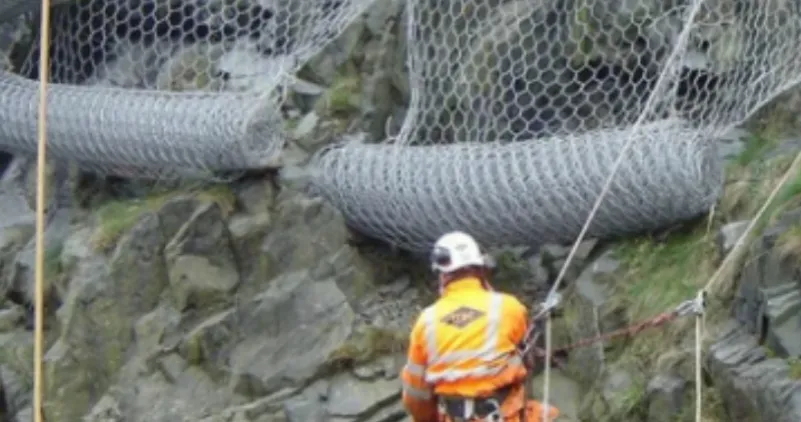-
 Phone:
Phone: -
 Email:
Email:

Installation of Rockfall Netting for Enhanced Slope Stabilization and Safety Measures
Rockfall Netting Installation A Comprehensive Guide
Rockfall netting is an essential technique used in geotechnical engineering to mitigate the risks associated with falling rocks in mountainous and unstable terrains. This method provides a reliable solution for enhancing safety in infrastructure, such as roads, railways, and buildings, which are often threatened by rockfalls from steep slopes. The installation of rockfall netting requires careful planning and execution, taking into account geological conditions, environmental factors, and engineering standards. This article delves into the various aspects of rockfall netting installation, including its importance, types, installation process, and maintenance considerations.
Importance of Rockfall Netting
Rockfalls can have catastrophic consequences, endangering lives and causing significant property damage. They pose serious threats to transportation corridors, recreational areas, and residential developments located near cliff faces or steep slopes. Rockfall netting serves as a preventative measure that can catch or deflect falling rocks, thereby reducing the likelihood of impacts on roads and structures below. Moreover, the installation of netting can help stabilize loose rock, making it less likely to dislodge in the first place. By investing in rockfall netting, communities not only protect their infrastructure but also promote public safety and reduce future repair costs.
Types of Rockfall Netting
Various types of rockfall netting are available, each suited for specific conditions and anticipated rockfall sizes. Some of the commonly used netting systems include
1. Flexible Netting Comprised of high-tensile wire, flexible netting is designed to deform and absorb energy upon impact from falling rocks. It is ideal for low to moderate energy impacts.
2. Rigid Mesh Systems These involve a more robust framework that can resist greater forces. Rigid systems are typically used in scenarios where larger rockfalls are expected.
3. Rockfall Barricades In addition to netting, barricades can be combined with netting systems for enhanced protection. They serve as barriers that catch larger debris and redirect smaller rocks.
4. Hybrid Systems Some projects may benefit from a combination of flexible and rigid systems, tailored to the specific characteristics of the site.
Installation Process
rockfall netting installation

The installation of rockfall netting involves several key steps
1. Site Assessment A thorough geotechnical evaluation is paramount. Engineers assess the site’s geology, slope angle, existing vegetation, and rock mass conditions. Understanding the nature of potential rockfall events allows for the design of effective netting solutions.
2. Design Considerations Based on the site assessment, engineers design a customized netting system that meets safety standards and addresses site-specific challenges, such as soil erosion or heavy rainfall.
3. Preparation Before installation, the area must be cleared of loose debris. Any overhanging rocks should be removed or stabilized to prevent unexpected collapses during the installation process.
4. Implementation The installation typically begins with the anchoring system. High-strength anchors are drilled into the rock face to support the netting. Once anchors are securely in place, the flexible or rigid netting is attached and tensioned as required. The installation crew must follow safety protocols to ensure the well-being of workers throughout the process.
5. Testing and Commissioning After installation, the system must be inspected and tested to ensure it meets the required performance criteria. Any necessary adjustments should be made before the site is opened to public access.
Maintenance Considerations
Maintaining rockfall netting systems is crucial for their effectiveness. Regular inspections should be conducted to check for signs of wear, corrosion, or damage caused by environmental factors. Any degraded components should be promptly repaired or replaced. Vegetation growth within or near the netting can also pose a risk, leading to increased load and potential failure, thus regular clearing and maintenance of the surrounding area are essential.
Conclusion
Rockfall netting installation is a vital component of modern geotechnical practice, providing a safety net for communities living near unstable slopes. By understanding the importance of proper installation and maintenance, engineers and contractors can significantly reduce the risks associated with rockfalls, ensuring safer environments for all. With the right planning and execution, rockfall netting systems can serve as a robust solution for mitigating hazards in vulnerable landscapes.
-
Wire Mesh for Every Need: A Practical SolutionNewsJul.25,2025
-
Steel Fences: Durable, Secure, and Stylish OptionsNewsJul.25,2025
-
Roll Top Fencing: A Smart Solution for Safety and SecurityNewsJul.25,2025
-
Cattle Farm Fencing Solutions for Maximum SecurityNewsJul.25,2025
-
Affordable Iron Binding Wire SolutionsNewsJul.25,2025
-
Affordable Galvanized Wire SolutionsNewsJul.25,2025
-
Wire Hanger Recycling IdeasNewsJul.25,2025








